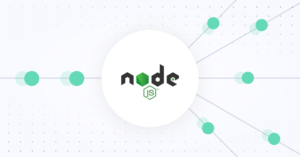How to build Node.js Blog API?
Are you looking to learn how to make Node.js Blog API? If so, you’ve come to the right place!
In this blog post, we will walk you through the way to make aNode.js Blog API. We’ll cover motifs similar as setting up the terrain, configuring the garçon, and creating the necessary models and routes. By the end of this tutorial, you’ll have a completely performingNode.js Blog API that can be used for colorful purposes. So let’s get started!
Requirements
Before starting your trip toward erecting aNode.js blog API, it’s important to know what you need to get started. To develop aNode.js blog API, you’ll need to have the following particulars – An introductory understanding of theNode.js terrain and its core principles.
-Node.js and npm installed on your system.
– A law editor similar to Visual Studio Code or Sublime Text.
– An understanding of how to use npm to install packages and dependencies .
– An introductory understanding of peaceful APIs.
– A way to test your API similar to Postman.
Once you have these particulars ready, the coming step in how to makeNode.js Blog API is to produce the design structure. Start by creating an empty directory for your design and produce separate flyers for different sections like regulators, models, routes, tests etc. You can also choose to add any fresh flyers for the association if demanded. After setting up the structure for the design, go ahead and install all the necessary modules and libraries needed for the design by running ‘ npm install ’ from the command line in the design directory.
Once all the modules are installed, you can begin rendering and creating models that correspond with the endpoints of your API using Mongoose or other ORMs for better scalability. You can also produce routes that correspond with HTTP styles and conduct that should be performed when penetrating specific URLs.
Installation
Before you can start erecting your Node.js blog API, you must install the necessary packages and factors. The first step is to install Node.js.Node.js is a JavaScript runtime that allows you to run garçon- side law. You can download the applicable interpretation for your operating system from the sanctioned website. Once Node.js is installed, you need to install the Express frame. Express is a web operation frame for Node.js that makes it easy to produce and maintain APIs. You can install Express using the Node Package Manager( npm) npm install express save In addition to Express, you’ll also need other packages to make your API.
These include body- parser, which allows you to pierce requested body data, and mongoose, which provides an interface for working with MongoDB. You can install these packages using the same command npm install body- parser mongoose save Once all of the necessary packages are installed, you’re ready to begin configuring your API.
Configuration
Configuring your Node.js blog API can be done in many ways. The first step is to set up the garçon terrain. You’ll need a garçon to host the API, similar to an Apache web garçon or aNode.js garçon. For this tutorial, we will be using the Node.js garçon.
Once you have the garçon configured and running, you need to produce the database to store your blog posts and other affiliated data. For this tutorial, we will use MySQL as the database. You’ll need to produce a new database and set up the connection to it. Next, you need to produce the models and schemas that define your blog data structure.
This can be done with any schema language, similar to Mongoose, Sequelize, or TypeORM. These models define the fields and connections in your blog posts and other data structures. Eventually, you need to define your routes and regulators that handle requests from your druggies. This is done by setting up the routes and defining the tutor functions that execute the applicable sense for each route.
This way will get your Node.js blog API over and running. With all of these factors in place, you can now start erecting your blog! First out, you should produce a runner template that contains introductory HTML luxury and the necessary styling information. After creating the template, you can begin writing the law that powers the colorful features of your blog. You’ll want to produce routes for reading and posting newspapers, displaying individual papers, and allowing commentary on each post. Also, you may want to add authentication so that only certain druggies can post papers.
When writing law for authentication, make sure to use secure encryption algorithms so your point remains secure. Incipiently, you should also consider adding hunt functionality so that druggies can fluently find the content they’re looking for on your point. Following these ways should give you an introductory understanding of how to make Node.js blog APIs.
Testing
Testing is an essential part of the development process when erecting aNode.js Blog API. Testing ensures that the operation is performing as anticipated, and can help to identify any implicit issues with the law. colorful types of tests can be performed on aNode.js Blog API. Unit testing involves writing individual functions to test each aspect of the operation, while integration testing tests how different factors interact with each other. Automated testing can also be used, which will automate the entire testing process.
When performing tests, it’s important to make sure that all routes and styles are tested completely. This means icing that all of the routes and styles work as anticipated and that there are no unanticipated crimes or bugs. Once all tests have been successfully completed, theNode.js Blog API is ready to be stationed. It’s important to regularly perform tests on the operation to ensure that it remains functional and secure. By doing so, inventors can snappily identify any implicit issues and fix them before they become a problem.
How to build Node.js applications is an important skill for any developer looking to create powerful and efficient APIs. When building a Node.js Blog API, it’s important to pay attention to detail and make sure that all of the components are properly integrated and tested before deployment. By doing so, developers can ensure that the application is secure, reliable, and bug-free. This will result in an API that is easy to use, reliable, and secure for the end users.
Also Read : 10 Python Tools Most Used in 2023
Also Read : 15 SEO TERMS FOR BEGINNERS




